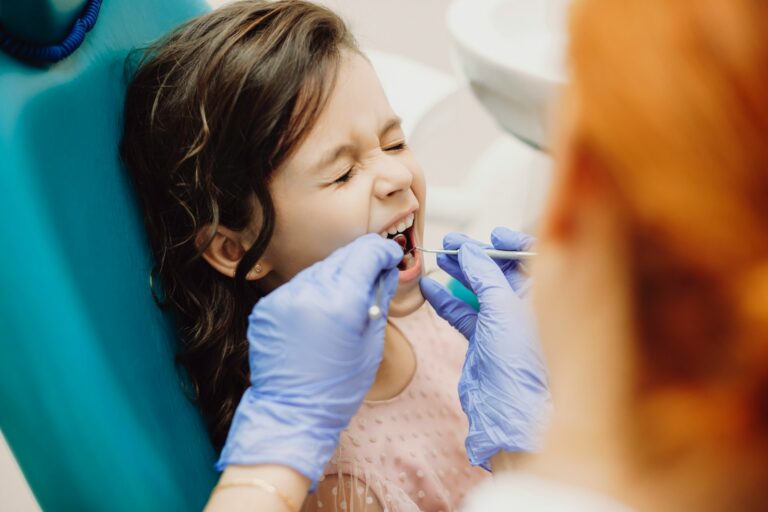Keeping our gums healthy is an essential part of maintaining overall oral health. Gums support our teeth and protect them from harmful bacteria. When our gums are healthy, they are firm, pink, and fit snugly around our teeth. However, when problems arise, we need to know how to spot the early signs to prevent more serious issues from developing.
Gum problems can start silently, with little to no pain. This makes recognizing early symptoms crucial. Some common signs include gum sensitivity, slight bleeding during brushing or flossing, and changes in the color or texture of our gums. Catching these signs early can help us take action before the problem worsens.
Ignoring early signs of gum problems can lead to conditions like gingivitis or periodontitis. These diseases can cause more noticeable symptoms, like persistent bad breath, receding gums, and even tooth loss. By learning to identify the early warning signs, we can address gum issues promptly and maintain a healthy smile. This guide will help us understand what to look for and what steps to take if we notice any signs of gum problems.
I. Recognizing Early Symptoms of Gum Problems
Common Indicators of Gum Issues
Spotting early signs of gum problems helps us take immediate action. Several indicators can hint at the onset of gum issues. One of the most common signs is bleeding gums while brushing or flossing. This typically suggests that our gums are inflamed. Persistent bad breath, despite good oral hygiene, also signals potential gum problems. Other signs include red, swollen, or tender gums. If our gums often feel irritated, it’s usually a sign that something is wrong and needs attention.
Understanding Gum Sensitivity and Pain
Gum sensitivity and pain are other early symptoms of gum problems. Healthy gums should not cause discomfort. If we notice that our gums hurt when we eat, drink, or brush our teeth, it could indicate an infection or inflammation. Gum sensitivity often starts subtly but can increase over time if left untreated. Addressing painful or sensitive gums early can prevent more serious conditions from developing.
Spotting Changes in Gum Appearance
Changes in the appearance of our gums can also indicate early gum problems. Healthy gums are firm and pink. If our gums become red, puffy, or begin to pull away from our teeth, it’s a sign of trouble. Another visual cue is receding gums, which make our teeth look longer than usual. Observing these changes and reporting them during our dental checkups can help catch problems early and keep our gums healthy.
II. Everyday Signs to Watch For
Bad Breath and Its Connection to Gum Health
Bad breath, also known as halitosis, is a common sign of gum problems. If we notice that our breath remains unpleasant even after brushing and using mouthwash, it might be due to bacteria build-up in our gums. These bacteria produce sulfur compounds, leading to persistent bad breath. Addressing gum health can help resolve this issue and leave us with fresher breath.
Bleeding Gums During Brushing or Flossing
Bleeding gums are a clear sign that our gums are not healthy. While it’s normal to occasionally experience slight bleeding if we floss too vigorously, frequent or regular bleeding is a warning sign. It indicates that our gums are inflamed and possibly infected. Gums may bleed due to plaque build-up, which irritates and inflames the gum tissue. Seeking professional advice can help us understand the underlying cause and treat it effectively.
Gum Recession and Loose Teeth
Another concerning sign of gum problems is gum recession. When gums recede, our teeth roots become exposed, leading to sensitivity and increased risk of decay. Teeth may also become loose if the supporting gums and bones are damaged. Loose teeth are a sign of advanced gum disease and require immediate attention. Recognizing these symptoms early can help us take steps to protect our teeth and gums before the problem worsens.
III. Understanding Gum Disease Stages
Gingivitis: The First Stage
Gingivitis is the earliest stage of gum disease and is usually reversible if caught early. It is characterized by inflammation of the gums, which can cause redness, swelling, and bleeding. Gingivitis is typically caused by poor oral hygiene that allows plaque to build up on our teeth. This stage of gum disease doesn’t usually cause pain, but it’s crucial to address it promptly to prevent progression to more serious conditions.
Progression to Periodontitis
If gingivitis is left untreated, it can advance to periodontitis. At this stage, the inflammation spreads deeper into the gums and begins to affect the bone that supports our teeth. Pockets may form between our gums and teeth, trapping food and plaque. Periodontitis can cause our gums to recede and our teeth to loosen. This stage is more severe and requires more intensive treatment to manage the damage and prevent further progression.
Severe Gum Disease Complications
Severe gum disease, or advanced periodontitis, can lead to significant complications. At this advanced stage, the supporting bone and gum tissue are severely damaged. This can result in tooth loss and may even affect our jawbone structure. Additionally, severe gum disease has been linked to other health issues such as heart disease, diabetes, and respiratory problems. It’s essential to take prompt action to treat and manage gum disease to avoid these serious complications.
IV. What to Do If You Notice Signs of Gum Problems
Immediate Steps to Take at Home
If we notice signs of gum problems, there are some immediate steps we can take at home. Start by improving our oral hygiene routine: brush our teeth at least twice a day with fluoride toothpaste and floss daily to remove plaque between our teeth. Using an antibacterial mouthwash can help reduce bacteria in our mouth. Avoid smoking and ensure we drink plenty of water to stay hydrated and keep our mouths clean.
When to Schedule a Dental Appointment
Noticing signs of gum problems means it’s time to schedule a dental appointment. Visiting our dentist allows us to catch issues early and get professional advice and treatment. We should see our dentist if we experience persistent bleeding, swollen or receding gums, or any pain and discomfort. Regular checkups and cleanings are vital to maintain our gum health and prevent further problems.
Preventive Measures to Protect Your Gums
Preventing gum issues involves consistent care and healthy habits. Brush and floss regularly, and use mouthwash to reduce plaque. Eating a balanced diet rich in vitamins and minerals also supports gum health. Avoid foods and drinks high in sugar and acidity. Quitting smoking is one of the best things we can do for our gums. Regular dental visits for checkups and cleanings are essential to monitor our gum health and catch any issues early.
Conclusion
Taking care of our gums is crucial to overall oral health. Recognizing and addressing early signs of gum problems can prevent serious complications down the line. From noticing bleeding gums to identifying bad breath, being aware of these symptoms helps us take timely action. Understanding the stages of gum disease, from gingivitis to advanced periodontitis, highlights the importance of early intervention.
Gum health maintenance includes improving oral hygiene, making dietary changes, and living a healthy lifestyle. Regular dental visits are paramount in catching and treating gum issues before they become severe. By being proactive, we can enjoy a healthy smile and avoid the complications associated with gum disease.
If you suspect any gum problems or need professional advice, contact Colorado Gum Care Northglenn, CO, today. Our team of periodontists in Westminster is dedicated to helping you maintain healthy gums and a beautiful smile.







